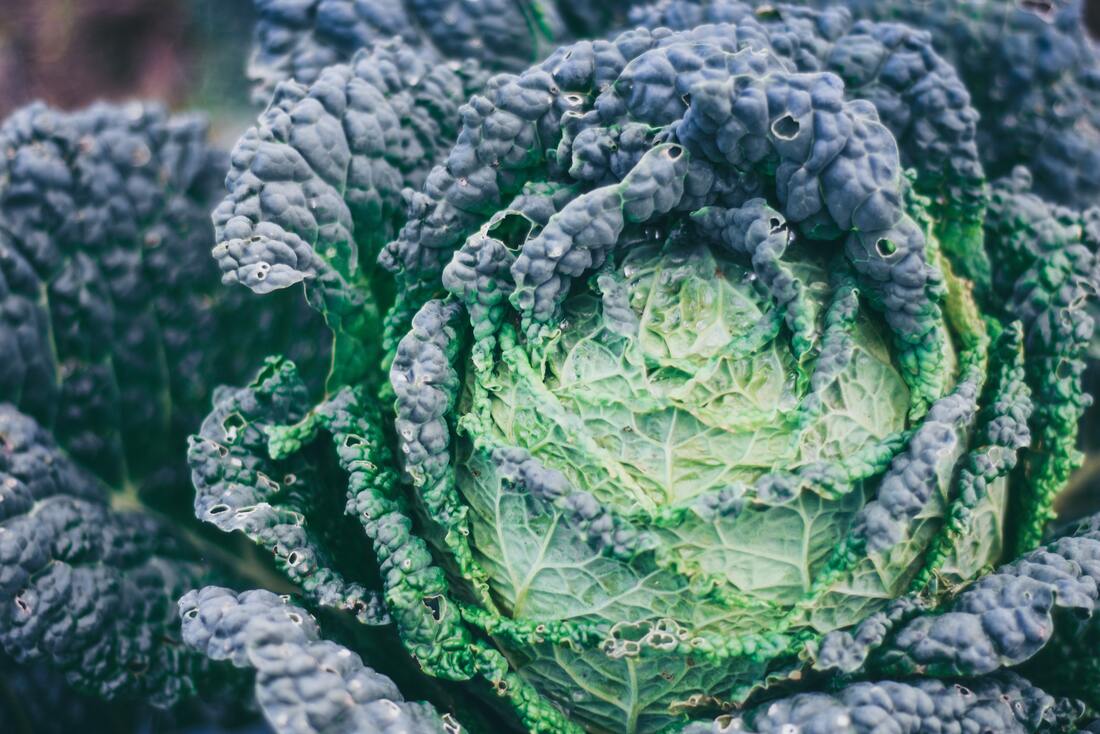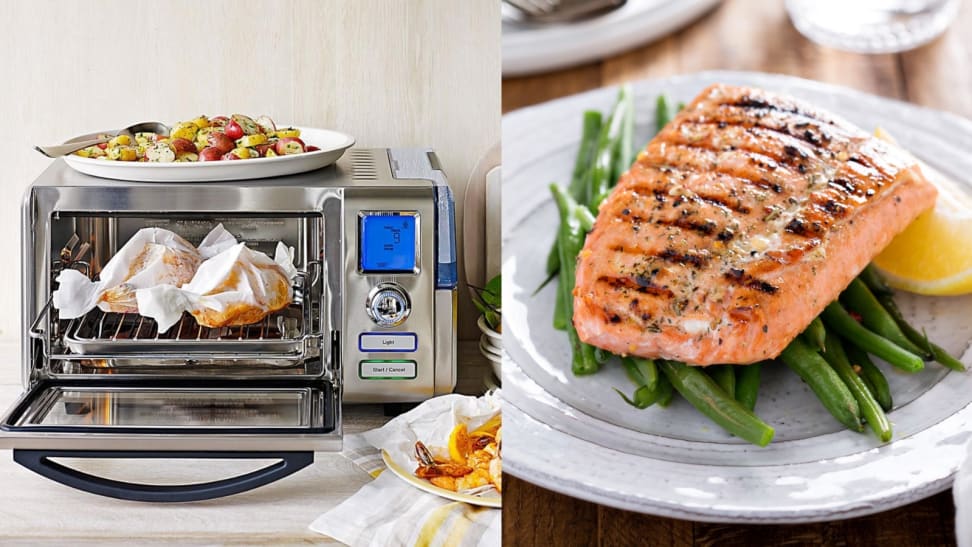|
SEARCH My Blog (Opens in new tab)
The wrong cooking methods destroy 80% of food's antioxidant health benefitsPolyphenols are micronutrients that are readily available in everyday food. They're packed with antioxidants - as long as you don't destroy these antioxidants by cooking the wrong way and ruin their health benefits. For example, boiling some polyphenol-rich foods destroys 80% of their polyphenol content. But it is this antioxidant content which helps protect us against chronic disease. In this article, I'll guide you through how to preserve the most benefit from polyphenol "superfoods" like tomatoes. TL;DR slip a steam oven under your microwave and enjoy the best of both. Why you should careOver the past 10 years, researchers and food manufacturers have become increasingly interested in polyphenols and their associated antioxidant activity. The chief reason for this interest is the recognition of their antioxidant properties, their abundance in our diet, and their likely role in the prevention of chronic disease associated with oxidative stress, such as cancer and cardiovascular diseases e.g. heart disease, and neurodegenerative diseases e.g. dementia. It's also thought that polyphenols can improve or help treat digestion issues, weight management difficulties, and diabetes. Polyphenols promote our immunity to foreign pathogens. This is achieved via various pathways, including the activation of signalling pathways that lead to the production of immune cells. Polyphenols have the ability to directly bind to and kill pathogens thus reducing associate cell damage within our system. The generally known benefits of foods such as green tea, black tea, coffee, blueberries, aubergines, cherries, broccoli, red wine, miso, tofu, tempeh, apples, chocolate, lemons, grapefruit juice and blackberries, and leafy vegetables - to name just a few - are down in large part to their polyphenol content. Polyphenols are also the source of the vital health benefits of Extra Virgin Olive Oil. The consumption of polyphenol-rich foods as a part of a healthy diet is therefore an effective way to boost our body's natural defences against infection. Go as sunny, fresh and natural as possible for your sourceHowever, there is a devil in the details. Whether or not we even have a chance of accessing the benefits of polyphenols depends on many factors, most of which are beyond our control. These factors include:
For example, the grinding of oranges results in the oxidative degradation of polyphenols resulting in brown pigments. Manufacturers add clarification steps aimed explicitly at removing certain flavonoids responsible for this discolouration and haze formation. Hence, manufactured fruit juices have low polyphenol (flavonoid) content and low natural Vitamin C content. The Vitamin C content you see on the label is added back in as an industrial additive. It is for related reasons that (cold-pressed) Extra Virgin Olive Oil is the best olive oil source of polyphenols and not the more processed variants. (Aside: Vegetable oils with a high polyphenol content include olive oil, flaxseed oil, and chia seed oil. These oils are generally unrefined and have undergone minimal processing. Oils with a lower polyphenol content include canola oil, soybean oil, and corn oil. These oils are generally refined and have undergone more processing.) While we cannot control most of the factors above, we can control the preparation in our kitchen and the cooking. In fact, preparation has a marked effect on the polyphenol content of foods. Leave the skin on fruit and vegetables and eat the outer leavesPolyphenols are generally present in higher concentrations in the outer parts of fruit and leafy vegetables than in the inner portions The simple act of peeling fruit and vegetables removes a significant portion of the total polyphenol load. In fruits and vegetables, flavonols are the most common form of polyphenol. These flavonols accumulate in the outer and aerial tissues (skin and leaves) because sunlight stimulates their biosynthesis. Marked differences in concentration exist between pieces of fruit on the same tree and even between different sides of a single piece of fruit, depending on exposure to sunlight. Similarly, in leafy vegetables such as lettuce and cabbage, glycoside (another polyphenol) concentration is more than ten times as high in the green outer leaves as in the light-coloured inner leaves. This phenomenon also accounts for the higher flavonol content of cherry tomatoes than of standard tomatoes, because they have different proportions of skin to whole fruit. The skin of citrus fruit contains large quantities of polyphenols. Also, the solid parts of citrus fruit, particularly the white spongy portion and the membranes separating the segments, have a very high polyphenol content. The whole citrus fruit may contain up to 5 times as much polyphenol as a glass of orange juice. Avoid overcooking, try steam cookingCooking also has a significant effect on the preservation of the health value of polyphenols Onions and tomatoes lose between 75% and 80% of their original polyphenol (quercetin) content after boiling for 15 minutes. They lose 65% after cooking in a microwave oven, and 30% after frying. (The specific loss depends on the food, check the FAQs below). Steam cooking of vegetables, which avoids leaching, is preferable. You can do this in a steam oven - I have a Cuisinart domestic combo convection steam oven for this purpose. Potatoes contain polyphenols (up to 190 mg chlorogenic acid/kg), mainly in the skin. Extensive loss occurs during cooking - so, again, best to steam cook smaller potatoes if you can. Consider Vitamin C, which we humans, unlike most other animals, are unable to synthesize and therefore it has to come from our diet. Vitamin C is one of the water-soluble vitamins, meaning that by boiling potatoes you not only lose most of the polyphenol content and health benefits but also the Vitamin C gets poured down the drain with the water. In case you're wondering, no remaining polyphenols were found in French fries or freeze-dried mashed potatoes. Steam cook, eat the skin, and enjoy your coffeeIn summary, choose fruit and leafy green vegetables that have a nice even exposure to sunlight. Eat more of the outer leaves and upper leaves, e.g. in spring onions, and eat the whole citrus fruit including the pith and membranes. Fruit and vegetables also supply most of our dietary fibre, and this is linked to a lower incidence of cardiovascular disease and obesity, and lower blood pressure. For vegetables, leave the skin on, use more of the outer leaves, e.g. cabbages and lettuce, and steam cook when you can. In all cases, avoid industrially processed foods as these have generally had the polyphenols removed - for cosmetic and other processing purposes. Remember, industrial orange juice has only low remaining polyphenols, and French fries and freeze-dried mashed potatoes have none. Ensuring that you get a healthy dose of polyphenols each day is one of the best dietary choices that you can make. Your mind and body will thank you. Good luck. PS I have some good news for us coffee drinkers. Coffee is a good source of polyphenols (as hydroxycinnamic acid). Cultures whose people drink several cups per day e.g. Finland, and Germany, may ingest as much as 32-times more polyphenols than those in cultures who drink little coffee (and who also eat small quantities of fruit and vegetables), e.g. the United States. FAQs - Flavonols, Antioxidants, Quercetin, and more ...What are the flavonols? In fruits and vegetables, flavonols are the most common form of polyphenol. What are the benefits of polyphenols? The chief reason for interest in polyphenols is the recognition of their antioxidant properties, their abundance in our diet, and their probable role in the prevention of various diseases associated with oxidative stress, such as cancer and cardiovascular and neurodegenerative diseases. It's also thought that polyphenols can improve or help treat digestion issues, weight management difficulties, and diabetes. What are the benefits of antioxidants? Antioxidants are compounds that may help delay or even prevent cell damage in the body. What are the benefits of steaming and boiling? Researchers believe steaming and boiling have some benefits in releasing the nutrient content of food. The reason for this is that boiling and steaming break down the cell walls, making the antioxidants (polyphenols as quercetin) more accessible. However, boiling removes the water-soluble vitamins and only leaves the fat-soluble vitamins in the food being prepared. Vitamins A, D, E, and K are fat-soluble. What are the benefits of cooking? Cooking food improves digestion and increases the absorption of many nutrients. For example, the protein in cooked eggs is 180% more digestible than that of raw eggs. However, some cooking methods reduce several key nutrients. What are the Heat Sensitive Vitamins? Because vitamin C is water-soluble and sensitive to heat, it can leach out of vegetables when they're immersed in hot water. Similarly, B vitamins are heat sensitive. What are the benefits of microwaving? Short cooking times and reduced exposure to heat preserve the nutrients in microwaved food. In fact, studies have found that microwaving is the best method for retaining the antioxidant activity of garlic and mushrooms. Meanwhile, about 20–30% of the vitamin C in green vegetables is lost during microwaving, which is less than most cooking methods. What are the benefits of coffee? Several studies have noted that people who consume at least 270 mg of caffeine daily, or the equivalent of about 3 cups of coffee, burn up to an extra 100 calories per day. Furthermore, caffeine may help your body burn fat for energy, and it seems especially effective at boosting your workout performance. However, its effects vary from person to person, based on individual characteristics such as body weight and age. > More posts to help you with EXERCISES > More posts to help you with DIABETES > If you are a @MEDIUM reader my publication Body Age Buster has hundreds of categorised posts which I have written especially for men and women over 50. Follow me on Quora for more health and fitness tips.
If you valued this article >> Follow me Leave a comment >> Share it >> Stay healthy If you have any questions email me and I will get back to you. Latest: get your free customised fitness plan designed uniquely for you.
|
ChoicesSince I was diagnosed at 50 with Type 2 diabetes I've been learning how to do bone-building fitness training which lowers my age. You can too. It's your choice. Walter Categories
All
Archives
May 2023
|


 RSS Feed
RSS Feed 


